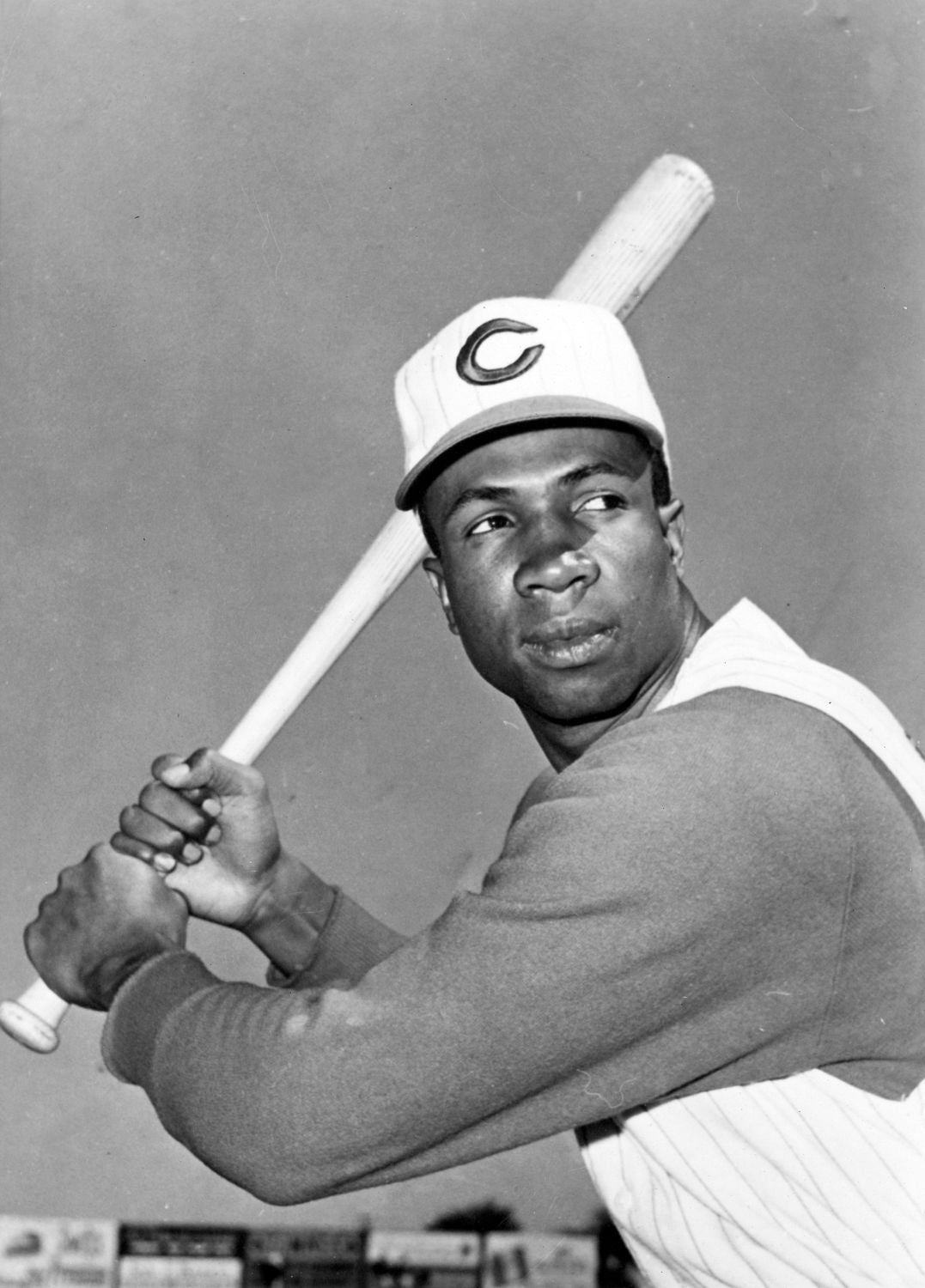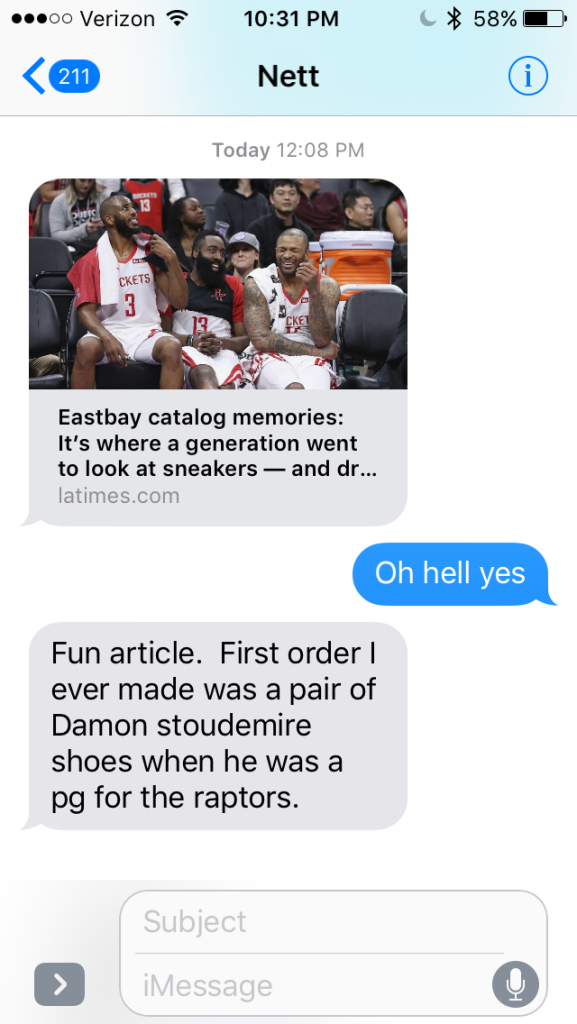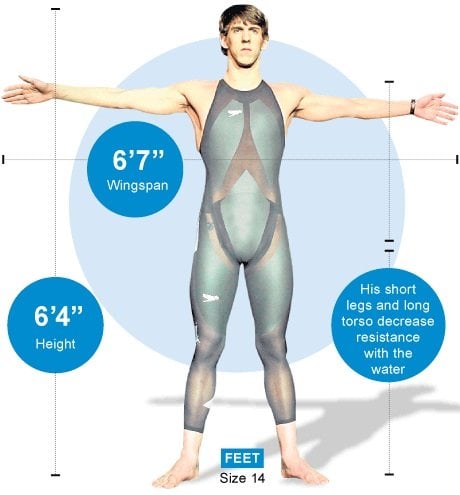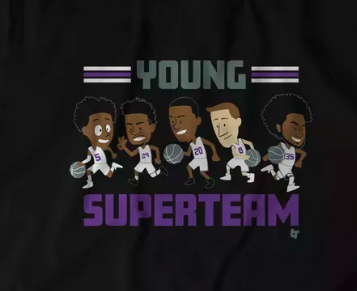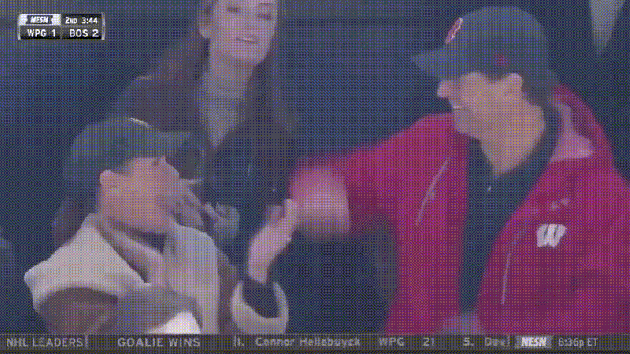
Two happy hockey parents with the missed high five on the occasion of their son’s first NHL…fight.
The Young Man & the Steelman
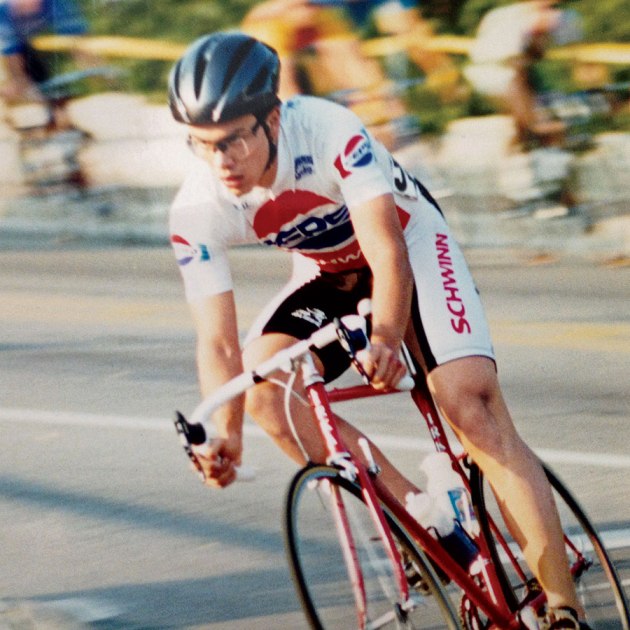
This one comes to us c/o Alex Denny, and it is one hell of a tale. A former olympic hopeful cyclist robs twenty-six banks. His get-a-way: a bike. As if that wasn’t enough, the robber’s name is Justice. Tom Justice. The brand of bike he used: Steelman. Too good! Here’s writer Steven Leckart setting up the scene:
The street was empty: no cars, no pedestrians. Suddenly the man spotted a police officer riding a four-wheel ATV. Squeezing the shopping bag, he settled into a relaxed gait. As the ATV approached, the robber smiled and waved hello, as would anyone who had not just knocked over a bank. Returning a stiff nod, the officer kept rolling. And so did the man, descending into a parking garage.
Not 60 seconds later, he emerged, carrying an aluminum bicycle on one shoulder and a messenger bag over the other and wearing a red, white, and blue spandex bodysuit, a silver helmet, sunglasses with yellow lenses, and a pair of cycling shoes. He climbed onto the bike, clicked into the pedals, and began to ride leisurely. It had been less than three minutes since he exited the bank.
There were no sirens or alarms — only the sound of the 11:26 a.m. Metra rumbling into the station three blocks away. By the time the train was gone, so was the thief. Fifteen minutes later, he was coasting south along Sheridan Road. He pedaled into Gillson Park in Wilmette and cruised up to a trashcan. After fishing out two crisp $20 bills and shoving them into the pocket of his bodysuit, he removed the Sports Authority bag and held it upside down over the trashcan. Several bundles of cash — what authorities would later reveal to be $4,009 — tumbled into the garbage with a syncopated thud.
The man returned the empty sack to his messenger bag and pedaled away.
I recently watched Robert Redford’s latest (and supposedly last) movie, The Old Man and The Gun (I liked it!), and I was struck by the small scale of it all relative to the big bank heists we’ve seen in movies for decades. Redford’s character ambles into small, neighborhood banks, well-dressed with a charming smile. He hands a young teller a note, puts his hand into his jacket, indicating he has a gun, and walks out just as calmly as he walked in.
That’s pretty much the same approach Justice took in his robberies. He was never armed, he handed a note to a teller, folded his hands and waited. They dubbed him The Choirboy – pretty great nickname for a bank robber if you ask me. Once outside the banks, he’d ditch the costume, revealing a spandex bike outfit, hop on his bike, and be gone. In the beginning, he’d justify the act as one of adrenaline rather than greed. He’d toss most of the money. Of course, it didn’t stay that way, but you’ll have to read the story to find out the specifics.
At the heart of Justice’s struggle is a belief that his life was to have more significance, and his inability to create it when his initial plans fell through. He was a borderline Olympic cyclist, but for a few reasons the timing and his health didn’t line up at the right moments. Then he looked for significance in joining the French Foreign Legion (a military outfit that, in exchange for five years of service, grants soldiers French citizenship), but he had a problem with other plebes and superiors.
Justice never found the significance he was looking for, and he filled that void with a collection of dangerous and damaging decisions. I can understand the feeling that drove Justice to rob banks on bike. In passing moments, I have definitely wondered if I’m leading a significant life, as I’m sure is the case for many of you readers. Justice’s reaction to that ennui is extraordinary, but the feeling…a lot of us are familiar with that.
Steven Leckart does a great job balancing the incredible plot of this story with Justice’s search for meaning. When’s this going to be made into a movie? – PAL
Source: “The Bicycle Thief”, Steven Leckart, Chicago Magazine (01/29/2019)
TOB: This story is absolutely wild and you should read the whole thing. From the Chicago suburbs to the drug cartels in Tijuana to a cold river in Walnut Creek, if you told me the plot I’d think it was a new movie starring Leonardo DiCaprio.
Bummin’ Around.
The defensive coordinator for the NFC Champion Rams is Wade Phillips. Wade has been around the NFL a lonnnng time. He’s been a coach nearly 40 years, and tagged along with his dad, the legendary Houston Oilers coach Bum Phillips, before that. The Ringer did an excellent profile on Wade, who has become known as a bit of a defensive mad scientist over the years by turning bad defenses good, and good defenses great, in very short order. But he’s also a character, from a family of them, and I’d like to direct your attention there.
His dad, Bum, may be better known for his famous quotes, or those attributed to him, than for his coaching. For example, on legendary Alabama Coach Bear Bryant:
“He can take his’n and beat your’n, and then he can turn around and take your’n and beat his’n.”
Or in response to Coach Sid Gillman telling him that breaking down football film is better than sex:
“Sid, you must not be doing it right.”
Or on job security:
“There’s two kinds of coaches, them that’s fired and them that’s gonna be fired.”
Or on a sense of self worth:
“I always thought I could coach. I just thought people were poor judges of good coaches.”
Possibly my two favorites concern Earl Campbell, the Hall of Fame running back who played for Bum. During a workout, Campbell was unable to finish a mile run. Reporters asked Bum if he was concerned and he said:
“When it’s first and a mile, I won’t give it to him.”
And when asked if Campbell was a running back in a class by himself, Bum unleashed this gem:
“I don’t know if he’s in a class by himself, but I do know that when that class gets together, it sure don’t take long to call the roll.”
Campbell features rather heavily in the Wade Phillips story – he was a 30 year old assistant with the Oilers when the team drafted Campbell, and the two had similar interests: football, beer, and country music, mostly:
The pair would sit together on the team plane, cranking up country music on the boombox and drinking Budweiser. “I liked Gladys Knight and all that stuff,” Campbell says, “but we listened to Willie Nelson.” Campbell had gotten close to Nelson during his days at UT. The musician was a friend of Royal’s, and on visits to Austin Campbell would go on runs with Nelson in the bayou nearby.
That last anecdote should make you laugh. Earl Campbell was 5’11 and 232 pounds of muscle, possibly the most physical running back of all time. Willie Nelson is reportedly 5’6, 150 pounds. I figured they must have made quite the sight, jogging in the Texas heat, and then I found this pic:
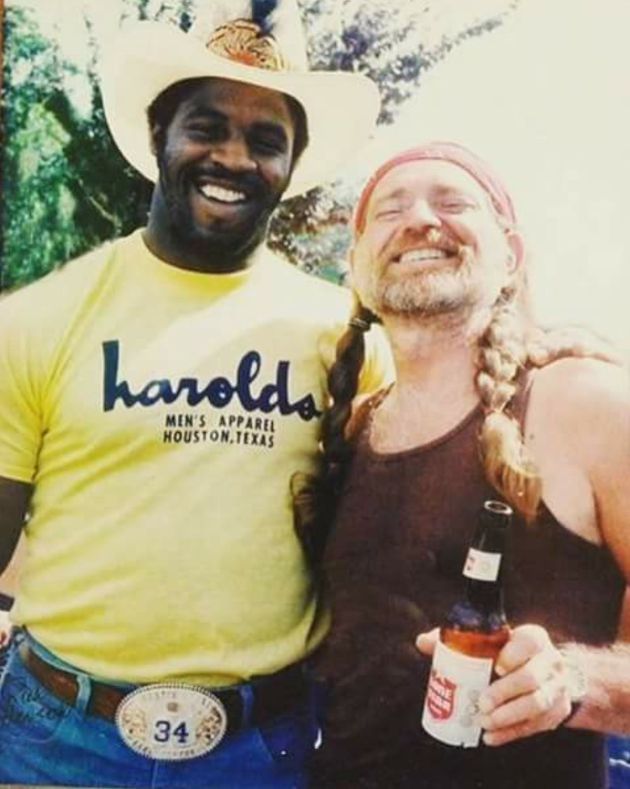
What a picture. What a world. Ok, one more.
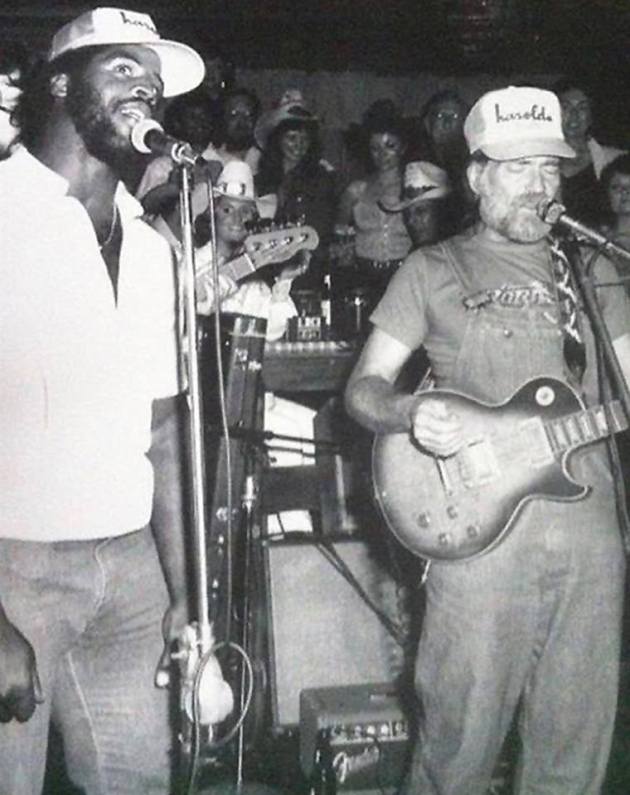
Sometimes the best parts of an article are the ones that unwittingly lead you to a place like that. -TOB
Source: “The Essential Stories of Wade Phillips“, Robert Mays, The Ringer (01/30/2019)
PAL: Here’s my favorite anecdote from the story:
On May 30, 2009, James (a player Phillips coached), then 28, got married. A reception at the W Hotel in Dallas followed. The first man on the dance floor was Wade Phillips. As Wild Cherry’s “Play That Funky Music” blared over the speakers, Wade sang along and swayed to the music with his wife, Laurie. For James, a future that once seemed so remote was finally within reach. “Wade teaches you, regardless of your circumstance, who you are, what’s goin’ on, to enjoy your life,” James says. “That man danced the entire reception. I said, ‘Ya know what? Forget about football. Forget about all this stuff, the glitz and glamour, and what we put value on. How about we value just being a human being and being able to enjoy your life?’”
The Business of Baseball is Fascinating and Not Fun
This is a tough one. Deadspin’s Marc Normandin does a hell of a job explaining Major League Baseball’s cold stove offseason within a historical context, but his story also had me considering what I look for in the game I love.
If it I see MLB for what it is – a multi-billion dollar business – then I can’t ignore the disputes between the union and the owners. If I only ask the game I love to entertain me, then I am a fool following this offseason as if it were a subplot on a reality show, in part enabling billionaires to fleece millionaire players as well as us fans. What MLB is, and what it is to me…reading this story had me wondering just how close (or far apart) those two points are in my mind.
Back to Normandin’s story. While there is no salary cap in baseball, there is a luxury tax. A luxury tax is essentially a soft salary cap on player payroll. A team that goes over a the ceiling ($219MM in 2019), then pays a tax on the amount over the ceiling.
Get this: the players’ union actually proposed the ideas of a “competitive balance” tax in an effort to squash the idea of a salary cap from any future negotiations. This happened back in 1997, and the initial tax was only applied to the five top-spending teams (that didn’t last). What’s more, the tax didn’t grow proportionally to the revenue earned over the next twenty years.
More important than pointing out the insignificant punishment, though, is that jump from $117 million to $206 million over the course of 16 years. MLB’s revenues grew from $3.58 billion in 2003 to 2018’s record $10.3 billion, a 188 percent jump during that period. The luxury tax ceiling, however, grew by just 68 percent in that stretch. If teams are avoiding going over the luxury tax and luxury tax growth is well below revenue growth, then your luxury cap is, at best, a soft salary cap.
However, a luxury tax is only effective if some teams choose go over the soft cap and pay the tax. If teams like the Yankees and Dodgers – organizations that typically set the market for free agents because they have the most money to spend – are not going over the soft cap, then all the other teams can bid for players at a lower rate.
All of this is to repeat a point TOB has been underscoring several times over the offseason: owners are making so much goddamn money – regardless of whether they have a great team or players – that they are not too eager to drop something in excess of $300MM on a single player. Whether or not it makes the team better – what we all care about – that is a shitty business investment 99 times out of 100, and that’s what the owners care about.
Normandin’s article goes into greater detail on the history of collusion in MLB, free agency, and past collective bargaining negotiations over the years. It’s a pretty fascinating read in which he compiles and references a bunch of other excellent writing on the subject, but it all makes me feel very far away from a day game with a beer in one hand and dog in the other while making dollar bets on mound ball. – PAL
Source: “How MLB’s Luxury Tax Became A Salary Cap Because Of Decades Of Failure”, Marc Normandin, Deadspin (01/30/2019)
TOB: Maybe it’s the lawyer in me, but following this stuff and understanding the dynamics of what is going on behind the scenes adds to my enjoyment. If I didn’t, I’d be pulling my hair out and screaming, “WHY DON’T THE GIANTS GO GET MACHADO OR HARPER!!!!!?!?!?!?!?” Well, actually, I’m almost there, anyways. But when I see fans on Twitter yelling at the Giants beat writers about how the Giants aren’t doing anything, it’s nice to have an idea of why things are the way they are.
Build Your Baseball Dream Team

These things are dumb but fun.

I’m not even sure who created this, but I like it: Using the list above, create the best team you can, with one player from each position, with a salary cap of $33. Before you continue, please make your list.
…
…
…
Done? Good. Here were our initial lists:
| TOB:
SP: Kershaw $1
C: Posey $3
1B: Pujols $5
2B: Cano $2
3B: Arenado $2
SS: A-Rod $5
LF: Bonds $5
CF: Trout $5
RF: Sheffield $1
DH: Edgar $3
CL: Kimbrel $1
Total: $33 |
PAL:
SP: Pedro $2
C: Posey $3
1B: Pujols $5
2B: Kent $1
3B: Arenado $2
SS: Jeter $3
LF: Manny $3
CF: Griffey $4
RF: Ichiro $5
DH: Edgar $3
CL: Jansen $2
Total: $33 |
After making my initial list, I wondered what the optimal list would be. From Baseball Reference, I obtained the 7-year peak WAR for each player available. I chose 7-year WAR because, in part, it was pre-totaled for me by Baseball Reference, but also because it seems like a reasonable estimate of a player’s sustained peak – we want the best a player has to offer, while controlling for a single outlier season by taking a larger time span, and controlling for players with lower peaks but more longevity.
I then averaged each player’s 7-year peak WAR by dividing by 7 to obtain their average single season WAR over their 7-year peak. The exceptions here are Mookie Betts and Nolan Arenado, who have only played 4 and 5 full seasons, respectively. I divided by 4 and 5 for each of them to make things fair, but I do acknowledge this could potentially inflate the numbers for those two if they tail off the next couple years. But by doing this, I figure I’m creating the single best team possible, given the parameters, for one season of play.
I then totaled the average WAR over their 7-year peak for the teams we selected. My team totaled 78.04 WAR. Phil’s team totaled 68.19 WAR. Sorry, bud. But, a theoretical team of replacement players totaling a WAR of zero are expected to win 52 games in a 162 game season. Thus, the team I created would be expected to win 130 games, and Phil’s team would be expected to win 120 games. A fine showing, indeed!
But, while I had ten more wins than Phil (ahem), it made me wonder – how close to optimal had I come?
To find out, I sorted the players at each position by the average WAR over their 7-year peak. From this, I was easily able to select the best team possible, without the imposed “salary cap” of $33. Those players are: Clemens, Piazza, Pujols, Cano, Boggs, A-Rod, Bonds, Trout, Mookie, Frank Thomas, and Mariano Rivera. Their WAR totaled 87.73 for a single season. But they also went way over the salary cap at a cost of $44. To find the optimal lineup, I had to shave $11 off the cap spend while minimizing the corresponding loss in WAR.
To help, I created a new column showing how much WAR I’d lose by downgrading from the top option at each position. I then set out evaluating the results at that point. Some of the top players at each position were severely undervalued by whoever made the salary cap. For example, Cano was the top producing second baseman, but only cost $2. That was a smart choice by me. Similarly, Mookie Betts was way out ahead of any other right fielder, but only cost $3. My selection of Sheffield was thus bad, as it saved me $2 from Betts but cost me 3.37 WAR. Other players, like Bonds cost a lot at $5, but was 2.16 WAR over the next highest left fielder, Rickey Henderson (and Bonds nearly 5 WAR over the third highest left fielder). Here’s a screenshot of the spreadsheet at that point:
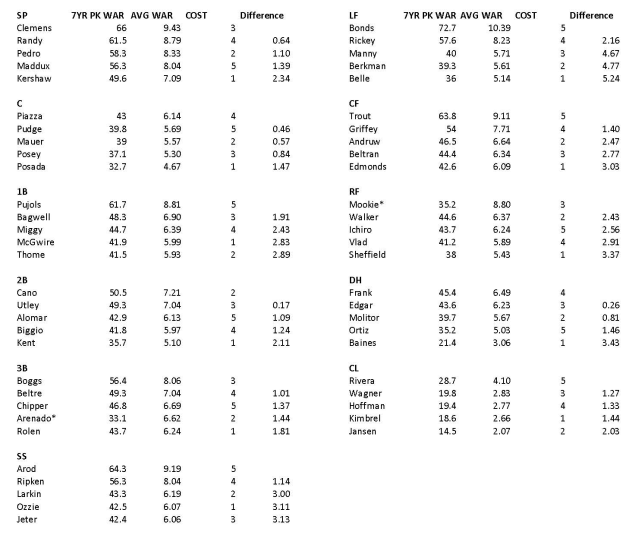 I wish I had the Excel skillz to have typed in some fancy formula to give me the highest in each group without exceeding the salary cap, but I don’t. So instead I studied the table and slowly started making changes that seemed to minimize the hit to my WAR while maximizing the reduction to my cost. Eventually, I came to the following starting lineup, but perhaps you can find a more optimal one:
I wish I had the Excel skillz to have typed in some fancy formula to give me the highest in each group without exceeding the salary cap, but I don’t. So instead I studied the table and slowly started making changes that seemed to minimize the hit to my WAR while maximizing the reduction to my cost. Eventually, I came to the following starting lineup, but perhaps you can find a more optimal one:
SP: Pedro
C: Mauer
1B: Bagwell
2B: Cano
3B: Boggs
SS: Ripken
LF: Bonds
CF: Trout
RF: Mookie
DH: Edgar
CL: Kimbrel
Total cost: $33; Total WAR: 81.35 (6.38 lower than the highest possible, and a mere 3.31 WAR above my initial selections.
My initial choices are pretty darn good, all things considered. I originally had good value with low cost picks like Kimbrel and Cano. I didn’t do as well on guys like Posey and Kershaw. And I used my big dollars in good spots, like with Bonds and Trout. The worst picks were anyone other than Bonds (and if you HAD to pick someone other than Bonds, than especially anyone other than Rickey), and anyone at shortstop other than A-Rod and Ripken.
How’d you do? Leave your team in the comments, especially if you found a more optimal lineup than the one I came up with in the end. Like I said, a dumb but fun exercise. -TOB
Source: “Tweet by Dallas Braden“, Twitter (01/29/2019)
PAL: My team is awesome and clutch. I think, to understand it, you have to think about the team within a batting order:
- Ichiro (9)
- Edgar (DH)
- Pujols (3)
- Junior (8)
- Manny (7)
- Arenado (5)
- Kent (4)
- Buster (2)
- Jeter (6)
SP: Pedro, Closer: Jansen
OH MY GOD THAT TEAM IS CLUTCH.
A Football Life
Footballs, also known as pigskins, are made of cowhide. Let’s get that out of the way from the jump. The journey from the farm to the Super Bowl has many checkpoints along the way, and the process has been more or less the same for 77 years. MMQB’s Kalyn Kahler tracked the complete process, and it’s a pretty fascinating, insightful story. We’re talking big machines, big animals, some blood and guts, and a lot of manual labor. There’s something some much more interesting in that process than a robot assembly line.
Of course, the first step is turning cows into hide. Farmers refer taking livestock to slaughter simply “moving”. Then the butchers do their job with the beef. Butchers always refer to livestock as the consumer good. Then the meat is separated from the hide, and then the hide is stacked, salted and cured.
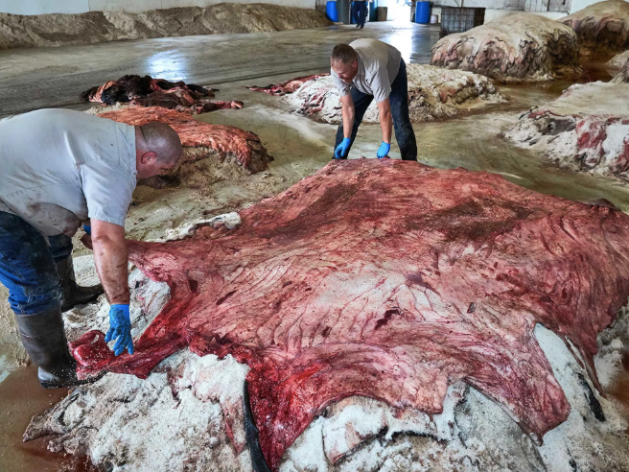
Eventually, the hides end up at a Tannery in Chicago. Every Wilson football has been made here at Horween Leather Co. for 77 years.
There’s a framed antique photo of his great-grandfather, Isadore, who founded the business in 1905 after emigrating from Ukraine. Isadore is standing next to his wife, Rose, and their two sons, Ralph and Arnold, who would grow up to play football at Harvard and then professionally for the Chicago Cardinals. (Arnold, Skip’s grandfather, was also a player-coach for the Cardinals.) Below the family photo there’s a black-and-white picture of Arnold with Knute Rockne at Harvard’s spring practice in ’29. Pro football was a small fraternity back then, and the Horween brothers were friendly with another Chicago player-coach: George Halas. That relationship is how the family business became the only leather supplier for Wilson, tanning every NFL football for the past 77 seasons. “How important is luck?” Skip says. “We just happened to know a guy.”
Only after all of this can the footballs be inspected and placed into three categories: game use, practice use, or retails. “Game balls” in the stores are the worst of the lot.
Kahler’s football ends up on the Cincinnati Bengals practice ball for kickers. A better fate for the cow than a McDonald’s burger, I suppose.
A fun read. – PAL
Source: “From Farm to Field, and Every Point Between: How a Cow Becomes a Football”, Kalyn Kahler, MMQB (01/31/19)
Videos of the Week
Evolutionary Vlade Divac:
Bonus (click through):

Tweet of the Week
https://twitter.com/holepics/status/1090336687165722632
PAL Song of the Week
Willie Nelson – “Midnight Rider” (Allman Brothers cover)
https://www.youtube.com/playlist?list=PLXVNwdbBtwKSKDSve4quaUE46FCEm5ib-
Like what you’ve read? Let us know by following this blog (on the right side, up near the top), or:
Email: 123sportslist@gmail.com
Twitter: @123sportsdigest
Facebook
Instagram: @123__sports
“Never half-ass two things. Whole-ass one thing.”
-Ron Swanson



